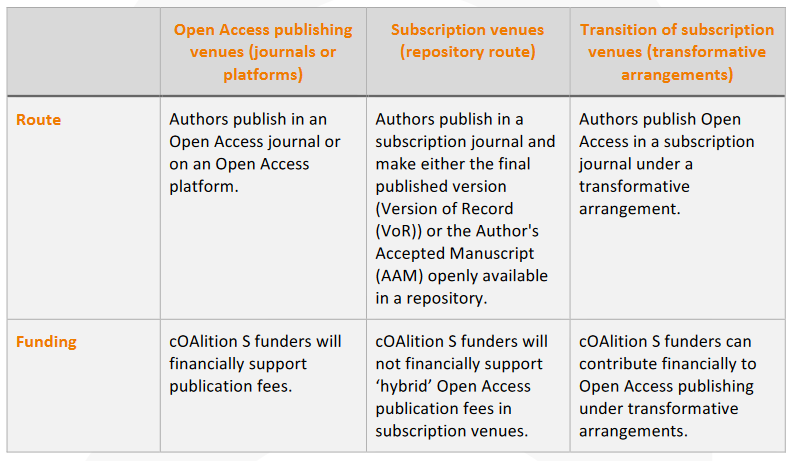Research funders in Europe want to ensure that research output they sponsor are openly accessible. They implement Plan S and design the Rights Retention Strategy. What does that mean for researchers in Hong Kong?
Plan S was put forth by cOAlition S, a collective of research funding agencies. Although the majority of cOAlition S members are based in Europe, researchers in HKUST should be aware of Plan S, its principles and strategies, because:
- We work in a global research community. HKUST researchers collaborate with peers in different parts of the world; we work on projects that draw funding from a wide range of sources, some of which may be cOAlition S members. According to Scopus, about 100 HKUST affiliated journal articles published in 2020 acknowledged funders in the cOAlition S group.
- Open Access strategies have no boundaries. Funding bodies and research institutions beyond Europe, including Hong Kong, may learn from Plan S if the strategies are successful.
What is Rights Retention Strategy (RRS) in Plan S Context?
To understand what this RRS means, we should first revisit the principles of Plan S:

Source: https://www.coalition-s.org/addendum-to-the-coalition-s-guidance-on-the-implementation-of-plan-s/principles-and-implementation/
Plan S requires authors who receive grants from member organizations to release their publications:
- via Open Access journals, platforms or repositories (Plan S has specific requirements for these venues to be compliant)
- in the form of published version (aka Version of Record, or VoR). If it is not possible to make the VoR open access, authors should use the pre-published accepted version (aka Author Accepted Manuscript, or AAM). Confused about these terms? Check this post.
- Immediately upon publications (i.e. no embargo period)
- under an open license, preferably the Creative Commons Attribution license (CC BY)
Since many journals do not fulfill Plan S requirements, researchers raised concerns that Plan S restricted their choice of journals. To give authors this choice, Plan S implements Rights Retention Strategy (RRS) to help authors retain the rights to use AAM; so that they can publish in the journals they like, without breaking Plan S compliance.
How RRS works
- cOAlition S informed publishers that their organisations require that at least the Author Accepted Manuscript (AAM) supported by their funding is published with a CC BY licence with no embargo.
- Funded researchers agree to this requirements when accepting the grants; therefore they should state this commitment in either the submission letter to publisher, or the acknowledgements section, or both.
- Here is a template to write the statement:
“This research was funded, in whole or in part, by [Organisation name, Grant #]. A CC BY or equivalent licence is applied to [the AAM/ the VoR] arising from this submission, in accordance with the grant’s open access conditions”.
Authors may simply stick this “magic phrase” in their communication with publishers. - When the journal publishes the paper, the authors should deposit the work in a repository. Often, authors do not know when the paper is officially published; a more feasible way is to deposit the work once the journal accepts it.
“Prior Contract” as the Legal Backing
Publishers have different copyright policies, some do not allow authors to share the AAM. How do authors go against the publishers in such cases? This is the legal backing in RRS: When funded researchers signed the grant agreements with cOAlition S organizations, they accepted the obligations to make the subsequent works open access. If a publishing agreement, which comes later, contradicts the grant agreement, the grant agreement should take precedence.
RRS is Only One of the 3 Routes to “Plan S” Compliance
cOAlition S created the Rights Retention Strategy for authors to fulfill the open access obligation through depositing in repositories. However, publishing in an open access journal is still the primary pathway under Plan S. As described in this Plan S document, there are three routes to comply with Plan S:
- OA journals / platforms
- RRS
- Journals covered in a Transformative Agreement

Authors should note that when they can use the first or the third route, they do not need RRS.
cOAlition S also built the Journal Checker Tool (JCT) to help authors find out which route to go. Authors simply enter the journal they use, the funder and their institution, JCT can match the combination to find the compliant route.

A Webinar on RRS
In January 2021, IFLA organized 3 webinars Rights Retention: Exploring How the Plan S Strategy Could Apply Globally for different regions. In the one for Asia and Oceania, held on 13 January 2021, our director Ms. Diana Chan joined as a lead respondent. View the recording on IFLA’s YouTube to know more about Plan S and RRS.
Plan S is by far the most active force moving research publications to the open. The practice and experience is setting a precedent for research institutions and funders over the world; many of them can adopt and adapt Plan S approach. In particular, RRS is an interesting practice; it can impact how authors retain the rights to their own works, so that they can share them under a more open license.
— By Gabi Wong, Library
Views: 10574
Go Back to page Top
- Category:
- Academic Publishing
Tags: institutional repository, open access, Plan-S
published January 18, 2021
last modified March 11, 2022


